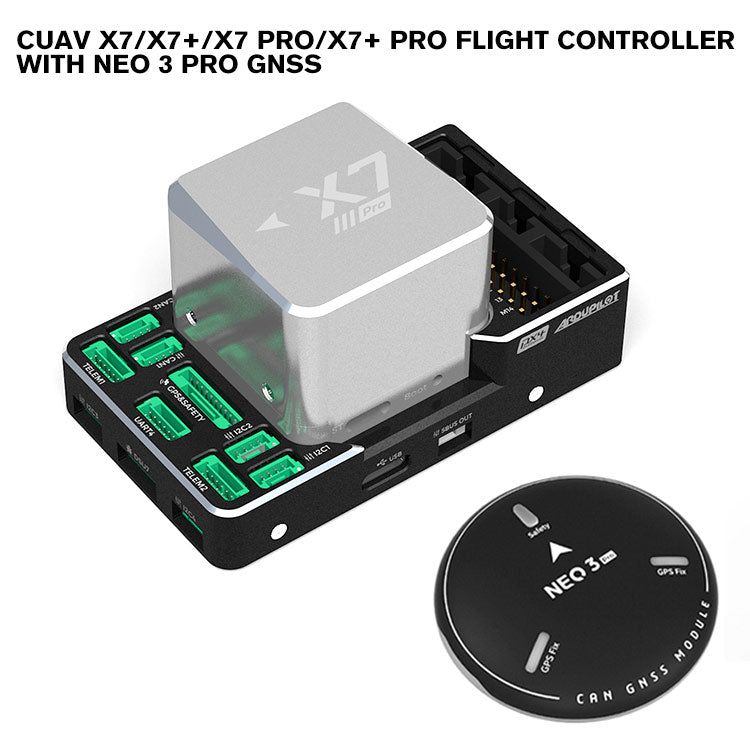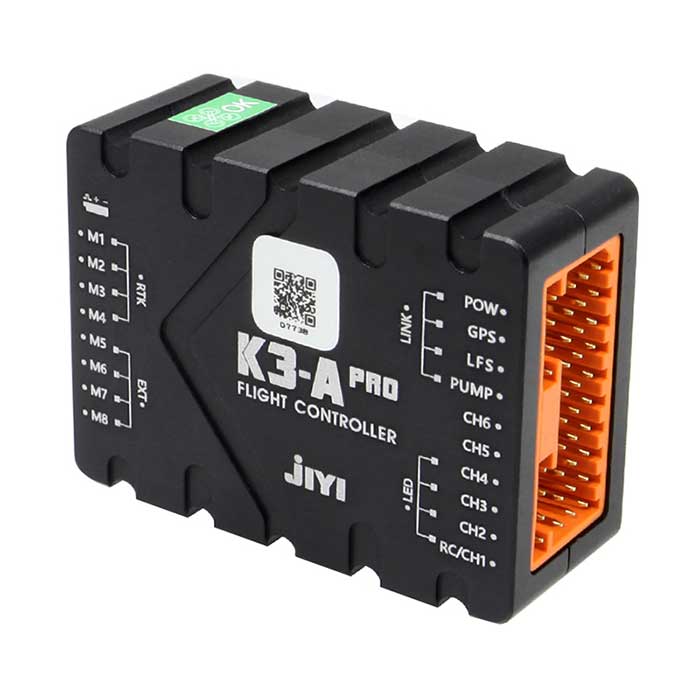The Value of Drone Trip Controllers in Modern Aerial Innovation: Trick Components and Their Impact
In the world of modern-day airborne technology, drone flight controllers act as the essential systems that orchestrate a drone's performance and abilities. These advanced systems integrate essential parts such as microcontrollers and GPS modules, facilitating security and precision in flight operations. Their duty is especially noticable in self-governing features, where innovative algorithms boost navigation and barrier evasion. As sectors increasingly depend on drones for applications ranging from agriculture to security, the advancing technology within flight controllers increases critical questions regarding their future impact and possible improvements. What developments exist in advance that could redefine our understanding of drone capabilities?

Summary of Drone Trip Controllers
In the world of airborne technology, drone flight controllers work as the crucial brain of unmanned airborne lorries (UAVs), allowing accurate ability to move and stability throughout flight. These advanced systems incorporate sensor information, processing formulas, and control inputs, allowing drones to execute intricate trip patterns with accuracy.
Drone trip controllers use different sensors, such as gyroscopes, accelerometers, and GPS modules, to evaluate the UAV's alignment and placement in real-time. This info is vital for maintaining equilibrium and guaranteeing secure operation in varied environmental problems. The controllers process this data to make instantaneous adjustments to the drone's motors, permitting for smooth transitions and receptive handling.
Furthermore, trip controllers are equipped with innovative software that supports attributes such as waypoint navigation, barrier evasion, and autonomous trip capacities. This software application is essential for both industrial and recreational applications, where reliability and precision are paramount. As drone innovation continues to development, the development of flight controllers will certainly play a pivotal function in boosting UAV functionality, safety, and versatility, inevitably increasing their applications across different industries.
Trick Parts Explained
Understanding the basic elements of drone flight controllers is essential for grasping exactly how these systems operate successfully. At the heart of a flight controller is the microcontroller, which offers as the mind, processing data from different sensors and implementing commands. Necessary sensors include accelerometers and gyroscopes, which measure the drone's positioning and movement, supplying important comments for stablizing.
An additional key part is the barometer, which evaluates elevation by determining atmospheric pressure, while general practitioner modules offer positional data, making it possible for autonomous navigating - SparkNavi drone flight controller and GNSS/INS made in taiwan. The trip controller also interfaces with Digital Rate Controllers (ESCs), which manage the rate of the drone's motors based on the controller's commands
Interaction modules, such as radio receivers, help with push-button control input, permitting drivers to send out commands in real-time. Additionally, some trip controllers integrate software application that can take care of complex algorithms for waypoint navigating, trip preparation, and telemetry data analysis.
Function in Trip Security
Central to keeping trip stability, drone trip controllers utilize innovative formulas to refine sensing unit data and make real-time modifications. These controllers are outfitted with an array of sensing units, consisting of gyroscopes, accelerometers, and measures, which continuously monitor the drone's orientation, elevation, and speed. By analyzing this data, the trip controller can determine inconsistencies from the wanted trip course and react immediately to maintain stability.
As an example, if a drone experiences an unforeseen gust of wind, the trip controller can promptly adjust the electric motor rates to combat the disruption, guaranteeing a steady trip trajectory. This ability is crucial not just for hand-operated flight operations but likewise for carrying out complicated maneuvers and maintaining smooth trip in various ecological problems.
.jpg)
In addition, the advanced algorithms used in trip controllers, such as PID (Proportional-Integral-Derivative) control, enable for fine-tuning of the drone's response to modifications in trip problems. By maximizing these control parameters, flight controllers can boost security, improve responsiveness, and decrease pilot work. Ultimately, the duty of flight controllers in ensuring flight stability is crucial for the reliable and secure operation of modern drones throughout varied applications.
Influence On Autonomous Procedures

Autonomous operations are especially critical in varied applications such as surveillance, delivery, and agriculture services. With improved flight controllers, drones can autonomously browse predetermined paths, efficiently gather data, and adjust to vibrant atmospheres. This capability minimizes the requirement for continuous human oversight, thereby Continue enhancing functional efficiency and safety.
In addition, the application of device discovering techniques within flight controllers enables drones to improve their efficiency in time by finding out from previous objectives. This adaptability leads the method for extra sophisticated independent applications, such as swarm modern technology, where multiple drones collaborate their actions to attain a common goal.
Future Trends in Flight Controllers
Technologies in flight controller modern technology are poised to reinvent drone capacities in the coming years. One considerable fad is the assimilation of synthetic knowledge (AI) and artificial intelligence formulas, enabling drones to learn from their environments and make real-time decisions. This improvement will certainly enhance autonomous navigating, challenge avoidance, and objective planning, considerably enhancing operational efficiency and security.
In addition, the growth of advanced sensor technologies, such as LiDAR and multispectral imaging, will certainly give flight controllers with richer information inputs. This will assist in more innovative logical abilities, enabling drones to perform complicated tasks, such as accuracy agriculture, rescue and search, and facilities evaluations with unprecedented precision.
An additional emerging pattern is the miniaturization of flight controller parts, which will certainly result in lighter and much more small drones. This advancement will certainly prolong flight periods and payload abilities, making drones much more flexible for numerous applications.
Conclusion
Finally, drone trip controllers act as vital parts in contemporary airborne technology, making certain security and accuracy in ability to move with the integration of microcontrollers, accelerometers, and GPS components. SparkNavi drone flight controller and GNSS/INS made in taiwan. Their ability to make it possible for independent procedures and adjust to different applications highlights their significance throughout several industries. As advancements in artificial knowledge and sensing unit innovation continue to emerge, the possibility for enhanced abilities and boosted operational performance in drone systems will likely reshape the future of aerial applications
Central to keeping trip stability, drone trip controllers make use of advanced algorithms to refine sensor information and make real-time adjustments. By analyzing this information, the trip controller can identify deviations from the wanted flight course and react quickly to keep security.
Furthermore, the innovative algorithms made use of in flight controllers, such as PID (Proportional-Integral-Derivative) control, allow for fine-tuning of the drone's response to adjustments in flight description problems. Eventually, the linked here function of trip controllers in making certain flight security is important for the effective and risk-free procedure of modern drones throughout diverse applications.
The improvements in drone trip controllers not just boost flight security but also significantly influence independent procedures. SparkNavi drone flight controller and GNSS/INS made in taiwan.
Comments on “Unequaled Precision: SparkNavi Drone Flight Controller and GNSS/INS Made in Taiwan”